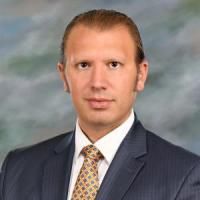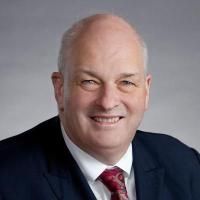Factors Associated with the Maintenance of Cost-Effectiveness at 5 Years in Adult Spinal Deformity Corrective Surgery.
Date
2024-03
Journal Title
Journal ISSN
Volume Title
Repository Usage Stats
views
downloads
Citation Stats
Attention Stats
Abstract
Study design
Retrospective cohort.Objective
To evaluate factors associated with the long-term durability of cost-effectiveness (CE) in ASD patients.Background
A substantial increase in costs associated with the surgical treatment for adult spinal deformity (ASD) has given precedence to scrutinize the value and utility it provides.Methods
We included 327 operative ASD patients with 5-year (5 Y) follow-up. Published methods were used to determine costs based on CMS.gov definitions and were based on the average DRG reimbursement rates. Utility was calculated using quality-adjusted life-years (QALY) utilizing the Oswestry Disability Index (ODI) converted to Short-Form Six-Dimension (SF-6D), with a 3% discount applied for its decline with life expectancy. The CE threshold of $150,000 was used for primary analysis.Results
Major and minor complication rates were 11% and 47% respectively, with 26% undergoing reoperation by 5 Y. The mean cost associated with surgery was $91,095±$47,003, with a utility gain of 0.091±0.086 at 1Y, QALY gained at 2 Y of 0.171±0.183, and at 5 Y of 0.42±0.43. The cost per QALY at 2 Y was $414,885, which decreased to $142,058 at 5 Y.With the threshold of $150,000 for CE, 19% met CE at 2 Y and 56% at 5 Y. In those in which revision was avoided, 87% met cumulative CE till life expectancy. Controlling analysis depicted higher baseline CCI and pelvic tilt (PT) to be the strongest predictors for not maintaining durable CE to 5 Y (CCI OR: 1.821 [1.159-2.862], P=0.009) (PT OR: 1.079 [1.007-1.155], P=0.030).Conclusions
Most patients achieved cost-effectiveness after four years postoperatively, with 56% meeting at five years postoperatively. When revision was avoided, 87% of patients met cumulative cost-effectiveness till life expectancy. Mechanical complications were predictive of failure to achieve cost-effectiveness at 2 Y, while comorbidity burden and medical complications were at 5 Y.Type
Department
Description
Provenance
Subjects
Citation
Permalink
Published Version (Please cite this version)
Publication Info
Passias, Peter G, Jamshaid M Mir, Pooja Dave, Justin S Smith, Renaud Lafage, Jeffrey Gum, Breton G Line, Bassel Diebo, et al. (2024). Factors Associated with the Maintenance of Cost-Effectiveness at 5 Years in Adult Spinal Deformity Corrective Surgery. Spine. 10.1097/brs.0000000000004982 Retrieved from https://hdl.handle.net/10161/30383.
This is constructed from limited available data and may be imprecise. To cite this article, please review & use the official citation provided by the journal.
Collections
Scholars@Duke

Peter Passias
Throughout my medical career, I have remained dedicated to improving my patients' quality of life. As a specialist in adult cervical and spinal deformity surgery, I understand the significant impact our interventions have on individuals suffering from debilitating pain and physical and mental health challenges. Spinal deformity surgery merges the complexities of spinal biomechanics with the needs of an aging population. My research focuses on spinal alignment, biomechanics, innovative surgical techniques, and health economics to ensure value-based care that enhances patient outcomes.

Christopher Ignatius Shaffrey
I have more than 25 years of experience treating patients of all ages with spinal disorders. I have had an interest in the management of spinal disorders since starting my medical education. I performed residencies in both orthopaedic surgery and neurosurgery to gain a comprehensive understanding of the entire range of spinal disorders. My goal has been to find innovative ways to manage the range of spinal conditions, straightforward to complex. I have a focus on managing patients with complex spinal disorders. My patient evaluation and management philosophy is to provide engaged, compassionate care that focuses on providing the simplest and least aggressive treatment option for a particular condition. In many cases, non-operative treatment options exist to improve a patient’s symptoms. I have been actively engaged in clinical research to find the best ways to manage spinal disorders in order to achieve better results with fewer complications.
Unless otherwise indicated, scholarly articles published by Duke faculty members are made available here with a CC-BY-NC (Creative Commons Attribution Non-Commercial) license, as enabled by the Duke Open Access Policy. If you wish to use the materials in ways not already permitted under CC-BY-NC, please consult the copyright owner. Other materials are made available here through the author’s grant of a non-exclusive license to make their work openly accessible.
